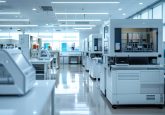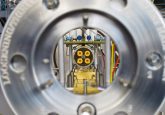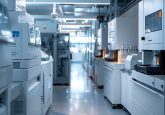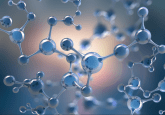Mass spectrometry successfully used for analyzing a mixture of intact virus particles

A group of chemists from Carnegie Mellon University (PA, USA) have successfully separated and weighed virus particles using mass spectrometry (MS). It is the first time researchers have ever successfully used matrix-assisted laser desorption ionization MS to analyze a mixture of intact virus particles. Their findings were presented at the 63rd American Society for Mass Spectrometry Conference on Mass Spectrometry and Allied Topics (31 May – 4 June 2015, MO, USA).
“It is important to study virus particles because they are everywhere on our Earth and in enormous numbers. They are not all bad for humans and, in fact, it could be said that bacteriophages are essential for life as we know it,” noted Mark Bier, Research Professor and leader of the research group at Carnegie Mellon University. “We need to understand the good from the bad to better understand nature and how we can best take advantage of these molecular forms.”
There has been limited success in the application of MS to viruses, due to their heavy masses. To overcome limitations brought about by the high mass, Bier’s group used a cryodetector-based matrix-assisted laser desorption/ionization time of flight mass spectrometer, known as a Macromizer, which has 16 superconducting tunnel junction detectors. The apparatus, 3.75 m in length, can analyze low charge heavy ions with a notably higher signal than a mass spectrometer with a standard ionizing detector.
Cowpea mosaic virus collected and purified at Case Western Reserve University (OH, USA) was used to test the device. Specifically the team used their novel MS technique to weigh and separate a mixture of two variants of the cowpea mosaic virus: RNA1 and RNA2. RNA 1 weighed in at 5.65 megadaltons, and RNA2 weighed 4.84 megadaltons. The detected weights were close to the theoretical weights of the viruses.
Bier hopes that the technique can be used to study other viruses and help us understand the robustness of viral structure, the mechanics behind viral infection and provide new ways of detection and treatment.
Source: Chemists weigh intact virus mixture with mass spectrometer.





